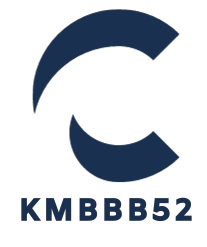In the increasingly competitive aged care industry, effective marketing has become crucial to attract new clients, retain current ones, and build a strong reputation in the community. However, to determine the success of these marketing efforts, it’s essential to track specific metrics. Here are some key performance indicators (KPIs) that aged care providers should monitor to ensure their marketing strategies are effective and continuously improving.

1. Website Traffic and Engagement
Your website often serves as the first impression for prospective clients and their families, making it a critical tool in the marketing arsenal. Key metrics to track include:
- Overall Website Traffic: Measure how many people visit your site monthly. A steady increase indicates growing brand awareness aged care marketing.
- Pages per Session: High engagement means visitors are exploring multiple pages on your site, showing interest in the content.
- Average Session Duration: The time users spend on your site can reflect content quality and relevance. Higher duration often means visitors find the information valuable.
- Bounce Rate: A high bounce rate suggests that visitors leave quickly, which may indicate content that is irrelevant or not engaging.
2. Conversion Rate
Conversions can take many forms, including filling out a contact form, booking a tour, or downloading a brochure. Tracking conversions is essential to measure how effectively your website drives action.
- Form Submission Rate: Track how many users fill out contact forms for more information or to request a callback.
- Tour Bookings: For aged care facilities, booking a tour is a major conversion event. Tracking tour bookings helps gauge the effectiveness of your content in persuading visitors to take this next step.
- Content Download Rate: If you offer downloadable guides or brochures, measure the number of downloads to see if users are interested in your resources.
3. Lead Quality and Source Tracking
Not all leads are equal; understanding lead quality and source helps prioritize resources for the most promising channels.
- Lead Quality: Segment leads based on their likelihood to convert. Consider factors like the completeness of submitted forms or specific information requests to gauge interest levels.
- Source Tracking: Identify where your leads are coming from—be it organic search, social media, paid ads, or referrals. Knowing which channels drive the highest-quality leads enables more strategic allocation of your marketing budget.
4. Customer Acquisition Cost (CAC)
Customer Acquisition Cost is a crucial metric that calculates the cost to acquire a new client. A lower CAC is ideal as it means your marketing spend is efficient.
- Cost per Lead (CPL): Divide the total cost of your lead-generation activities by the number of leads acquired to calculate CPL.
- Conversion Rate Optimization: Monitoring the conversion rate from lead to client helps you measure how well your lead-nurturing strategies work, which ultimately impacts your CAC.
5. Social Media Engagement
Social media offers a valuable platform for aged care providers to build relationships with potential clients and their families. Metrics to track include:
- Followers and Engagement Rate: Growth in followers reflects increased brand visibility, while engagement (likes, comments, shares) indicates that your content resonates with the audience.
- Comments and Messages: Pay attention to comments and direct messages as they can highlight specific areas of interest or concern. High engagement here signals an active, invested community.
6. Client Retention and Satisfaction
Retaining existing clients is just as important as acquiring new ones. Measuring client satisfaction helps you refine your services and ensure high retention rates.
- Client Retention Rate: Calculate the percentage of clients who continue using your services over a specific period. Higher retention rates suggest satisfaction and trust.
- Client Feedback and Satisfaction Surveys: Conduct surveys or collect reviews to get direct feedback from clients and their families. Look for recurring feedback points to identify areas for improvement or highlight strengths.
- Net Promoter Score (NPS): This metric reveals how likely clients are to recommend your services to others. An excellent NPS is a positive indicator of client loyalty and satisfaction.
7. Referral Metrics
Referrals from existing clients are a valuable growth source in aged care. By tracking referral metrics, you can gauge satisfaction and establish a word-of-mouth network.
- Referral Source Tracking: Monitor where new clients come from, especially if they’re referrals from existing clients.
- Referral Growth Rate: Measure how many new clients join via referrals over time. Growth in this area can indicate strong service quality and client satisfaction.
8. Reputation and Reviews
In aged care, trust is crucial, and potential clients often rely heavily on online reviews. Track your reputation across various platforms to gauge public perception.
- Review Ratings and Sentiment Analysis: Monitor review sites and social media for ratings and feedback. Track your average rating over time and analyze sentiment in comments.
- Number of Positive Reviews: Set goals to increase the volume of positive reviews, which can significantly boost credibility and attract new clients.
Conclusion
Effective marketing in aged care goes beyond traditional metrics like impressions and clicks; it requires a comprehensive look at engagement, lead quality, client satisfaction, and more. By focusing on these key metrics, aged care providers can gain insights into their marketing effectiveness, optimize their strategies, and build a lasting, trusted brand. Tracking and regularly reviewing these KPIs empowers you to make data-driven decisions, ensuring your marketing efforts align with the needs and expectations of clients and their families.
